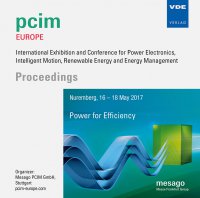Investigation of Magnetical Coupler Immunity Against External High Frequency and Density Magnetic Field
Conference: PCIM Europe 2017 - International Exhibition and Conference for Power Electronics, Intelligent Motion, Renewable Energy and Energy Management
05/16/2017 - 05/18/2017 at Nürnberg, Deutschland
Proceedings: PCIM Europe 2017
Pages: 4Language: englishTyp: PDF
Personal VDE Members are entitled to a 10% discount on this title
Authors:
Strzalkowski, Bernhard (Analog Devices, Germany)
Abstract:
Galvanically isolated couplers prevent flow of electrical current between two electrically separated systems while preserving flow of information. They are commonly used in applications in which voltage surges may damage equipment or harm users. They also prevent ground loops when the interconnection of different ground potentials is necessary. Historically, isolation devices used optical, capacitive, or transformer techniques. Magnetic approaches to isolation are typically based on transformer configurations and have historically been implemented using discrete devices. The traditional disadvantages with old, transformer-based isolators is that they occupy more board area than do novel integrated couplers. The advantage of discrete transformer is the existence of magnetic core making this coupling element almost immune against external magnetic field. The novel magnetic isolators provide signal and power isolation using micro air-core transformers deposited on the top of the integrated circuit (IC). Magnetic coupling allows high frequency signal transfer across isolation barrier, consuming much less power when compared to the optocouplers. Because of very good magnetic coupling between primary and secondary winding of the transformer, there is no need for additional magnetic core. However, external magnetic field can penetrate the secondary winding and can induce voltage noise affecting properly signal transmission. This paper is about magnetic immunity measurement of first generation iCoupler technology. The tests has been performed in high density, high frequency magnetic field environment. Test results confirm theoretical values of noise margins provided in the data sheets. Test equipment for generating high density and high frequency magnetic field is described. The measurement results for different type of magnetic couplers are discussed.


